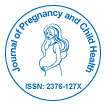Addressing Predictors of Obstetric Violence among Postpartum Women in Public Hospitals of Jimma Zone, Southwest Ethiopia: Call For Action
Received Date: May 02, 2024 / Published Date: Jun 10, 2025
Abstract
Background: Obstetric violence is a serious public health problem that arises from the unprofessional or dehumanized treatment of women by obstetric care providers. This includes verbal abuse, violation of women's autonomy and rights, performing unnecessary or non-consensual care, discrimination against women based on their background, physical abuse, non-dignified care and a lack of privacy and confidentiality during childbirth. It is therefore a complicated issue that impacts women's health and their behavior related to seeking medical attention. Thus, the purpose of this study was to investigate the factors linked to obstetric violence among postpartum women in Jimma public hospitals.
Method: An institutional-based cross-sectional study was conducted among 407 postpartum women in the Jimma zone public hospitals from August 12 to October 12, 2022. A simple random sampling technique was used to select the study subjects for structured, pre-tested face-to-face exit interviews. Data were entered into Epi-Data version 3.1 and exported to SPSS version 23 for analysis. Then, factors that showed significant associations in a simple linear regression model were added to multivariable linear regression models. Variables that had a P-value of <0.05 in the multivariable model were considered statistically significant.
Results: Overall, every woman experienced at least one form of obstetric violence during the labour and childbirth process. On multivariable linear regression analysis, knowledge of the women towards universal rights of childbearing women (β=-0.644, 95% CI=-0.916,-0.372) and the number of ANC contacts (β=-0.135, 95% CI=-0.232,-0.038) were negatively associated with obstetric violence score. In contrast, the unfavorable attitude of health care providers (β=0.600, 95% CI=0.422, 0.777) and intention to deliver at home (β=0.375, 95% CI=0.167, 0.584) are positively associated with increased obstetric violence.
Conclusion: The findings demonstrated that Obstetric Violence (OV) is a complicated phenomenon that can be impacted by several variables, including frequent ANC contacts, the cultural attitudes of healthcare professionals and women's awareness of their universal rights as childbearing women. We urge all parties involved-healthcare professionals, organizations, the community, women and civil society-to take action to address the issues by transforming the culture surrounding obstetric care, advocating for the new WHO ANC model and promoting optimal respectful maternity care, as well as evidence-based practices that follow a right-based framework and educating women about their rights to universal healthcare.
Keywords: Women; Obstetric violence; Predictors; Ethiopia
Citation: Taye A, Belachew T (2025) Addressing Predictors of Obstetric Violence among Postpartum Women in Public Hospitals of Jimma Zone, Southwest Ethiopia: Call For Action. J Preg Child Health 12: 697.
Copyright: © 2025 Taye A, et al. This is an open-access article distributed under the terms of the Creative Commons Attribution License, which permits unrestricted use, distribution and reproduction in any medium, provided the original author and source are credited.
Select your language of interest to view the total content in your interested language
Share This Article
Recommended Journals
Open Access Journals
Article Usage
- Total views: 143
- [From(publication date): 0-0 - Dec 08, 2025]
- Breakdown by view type
- HTML page views: 94
- PDF downloads: 49
